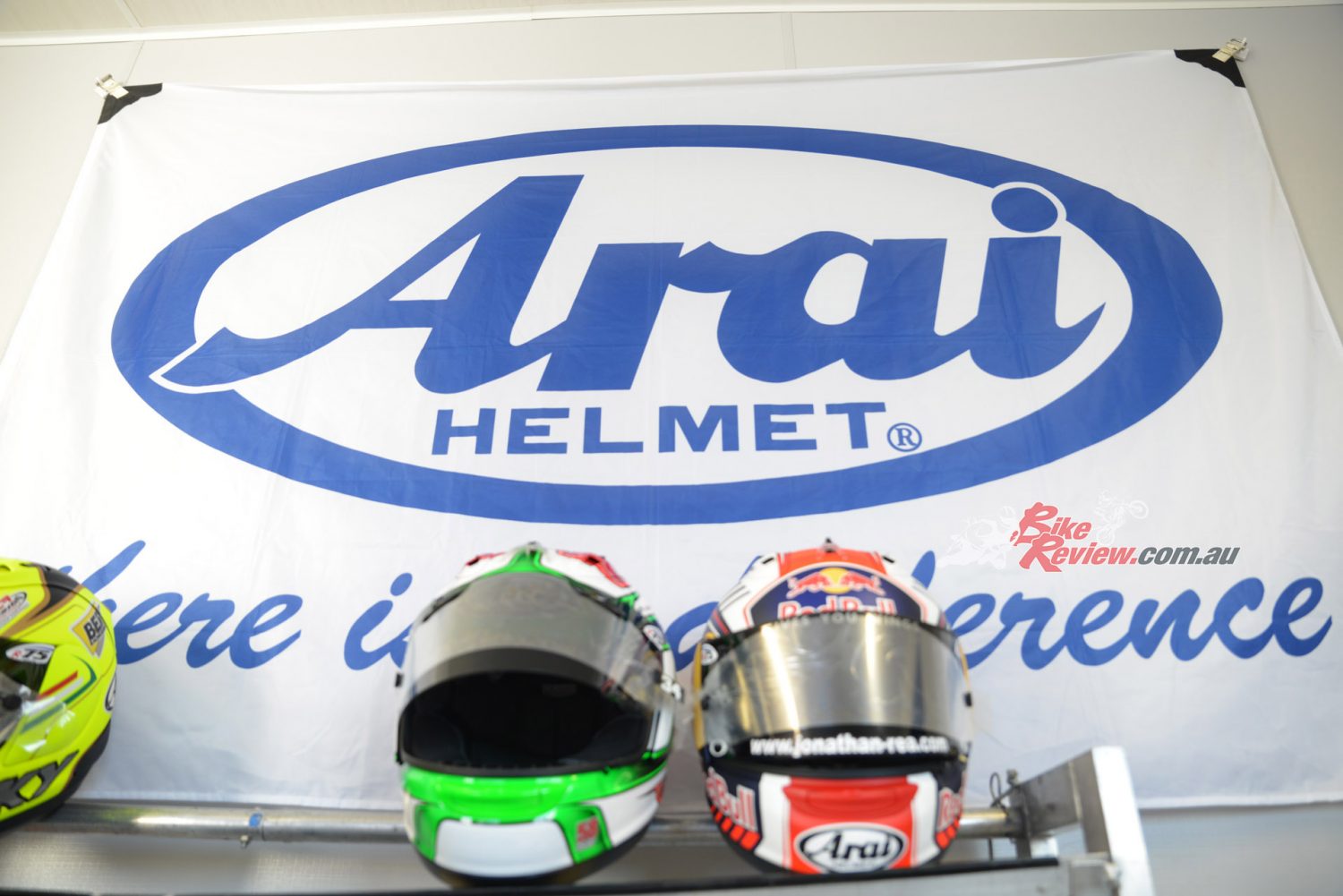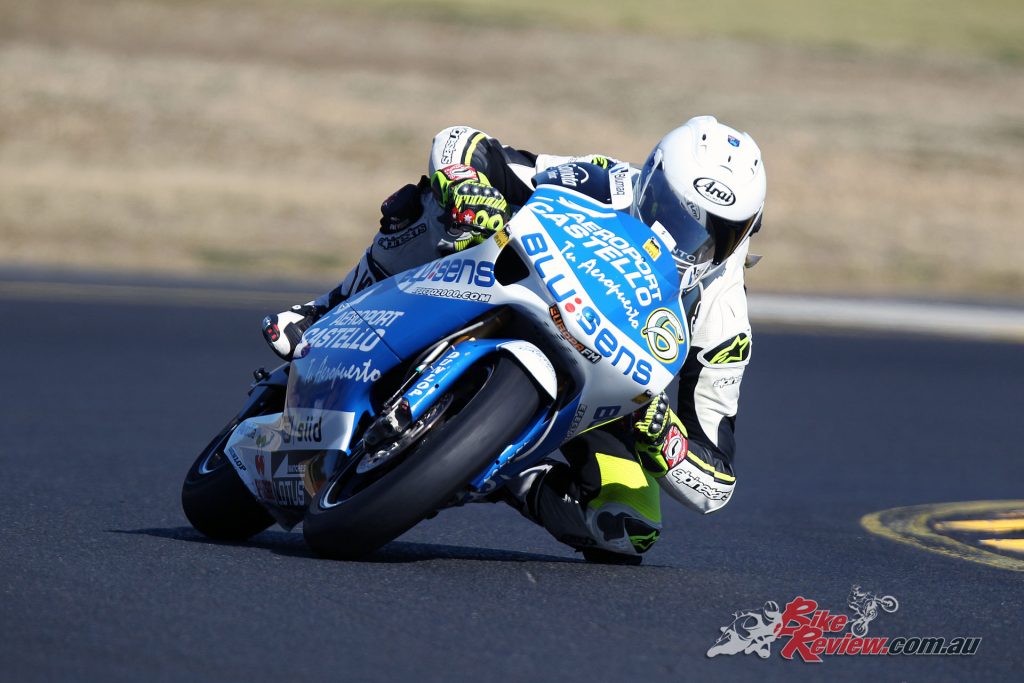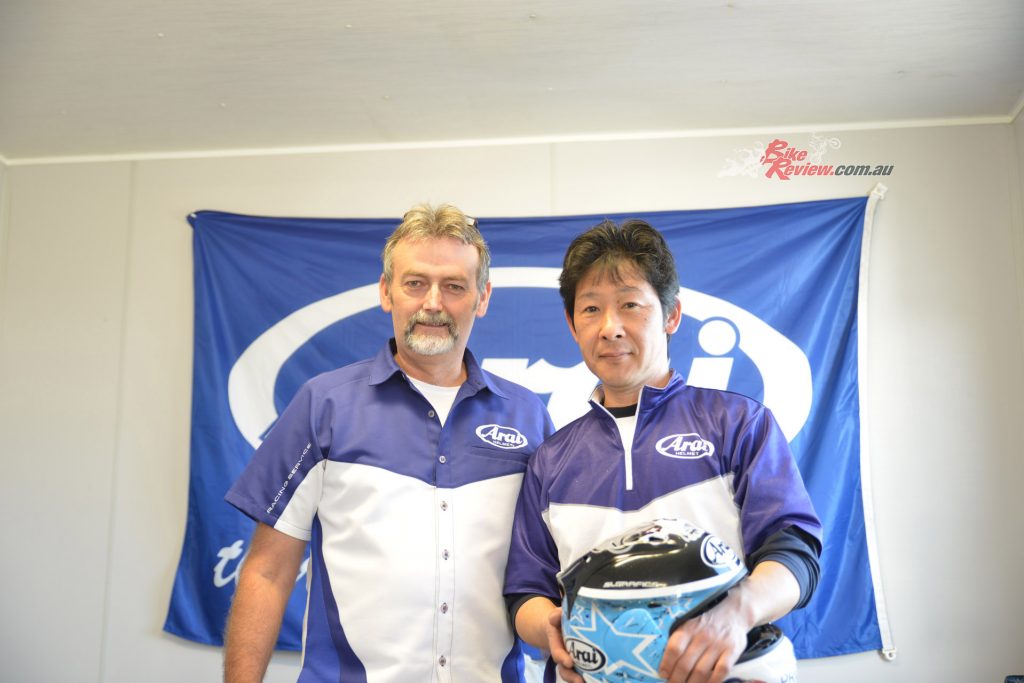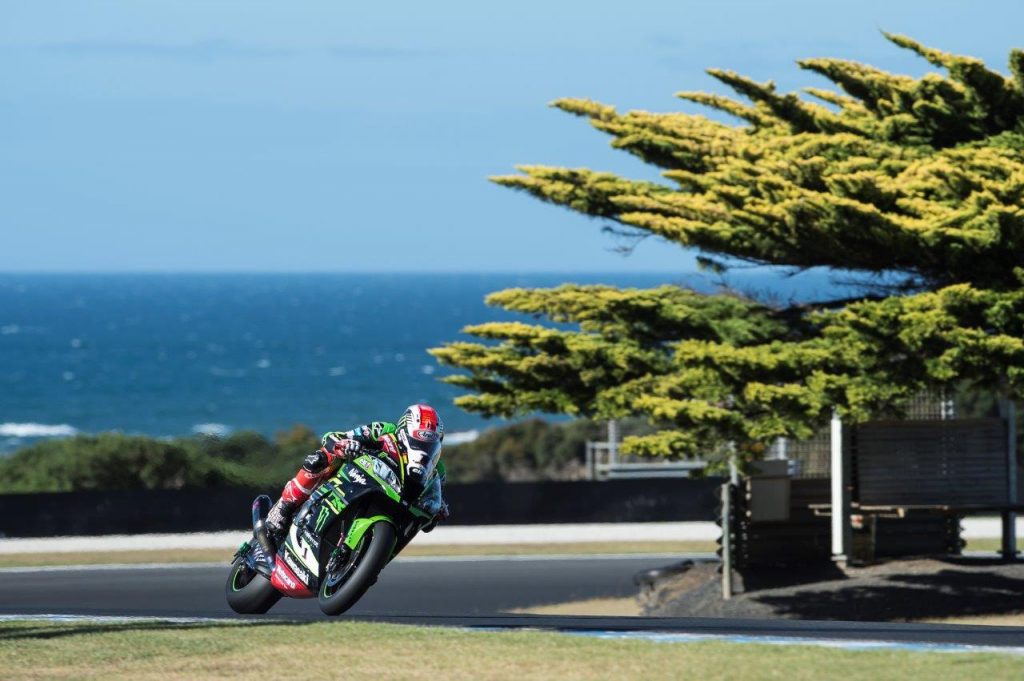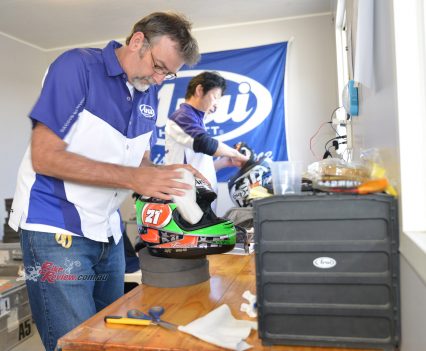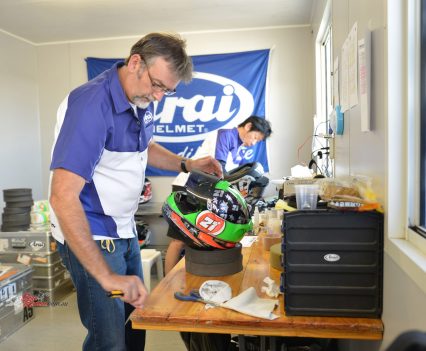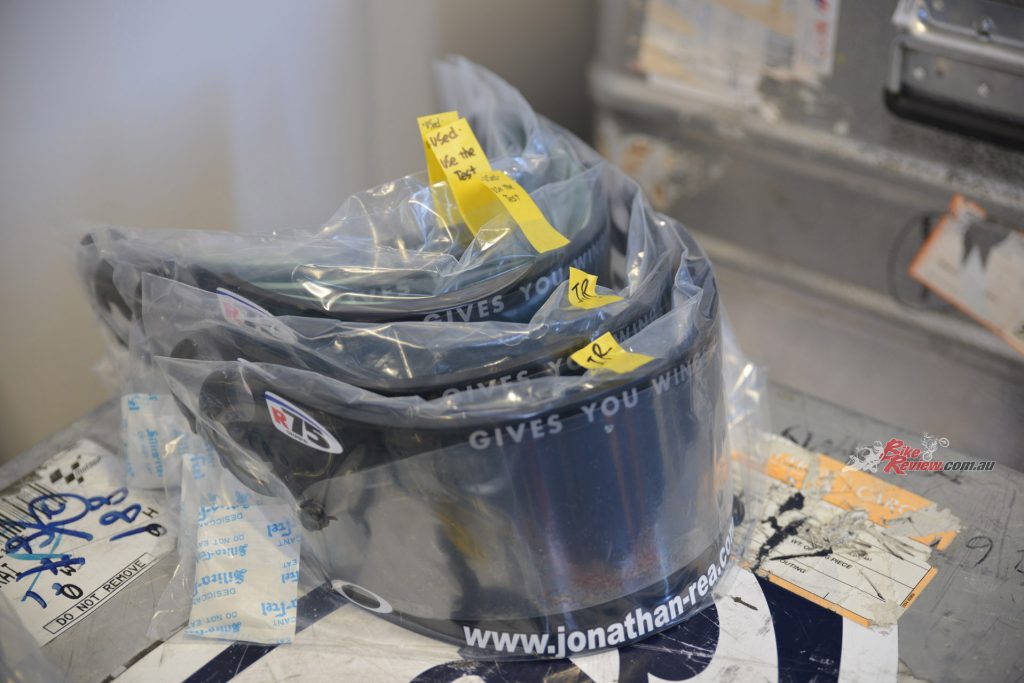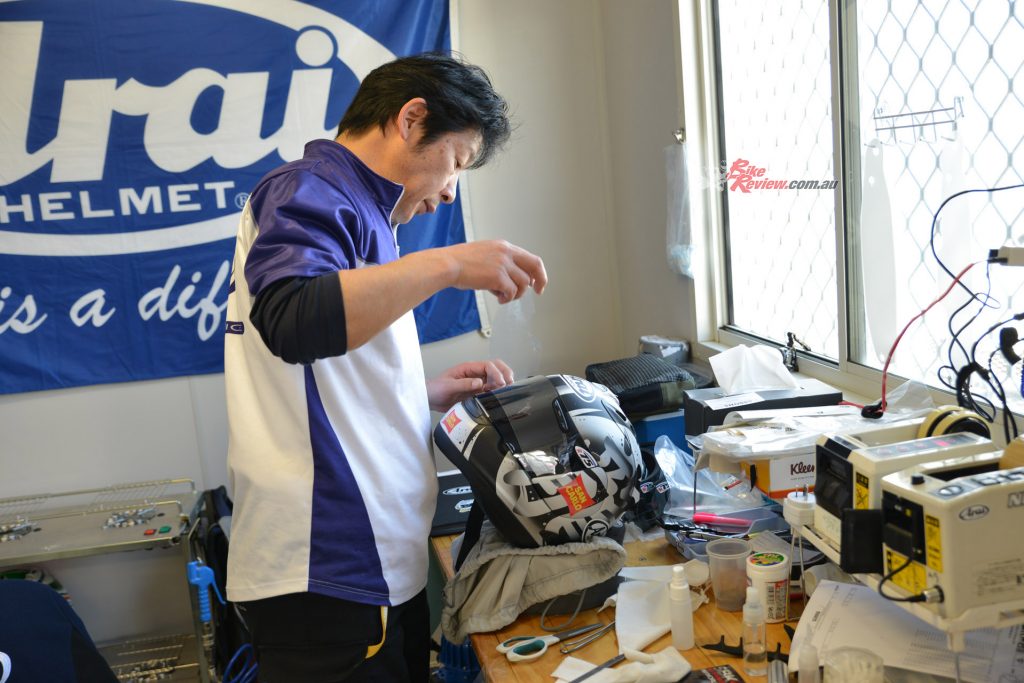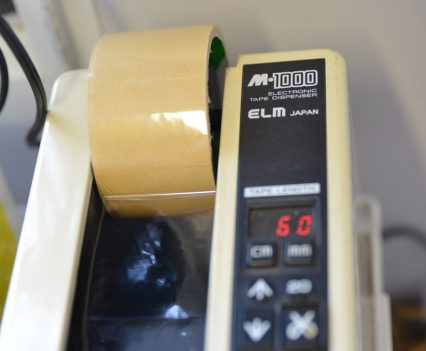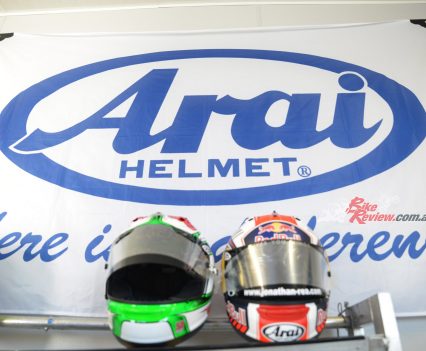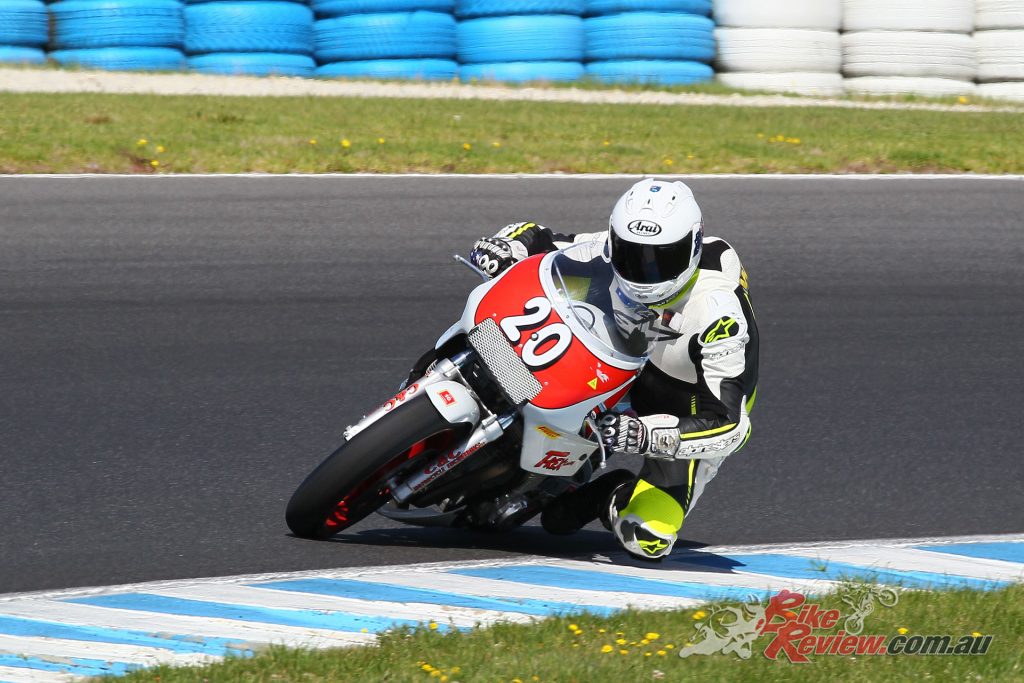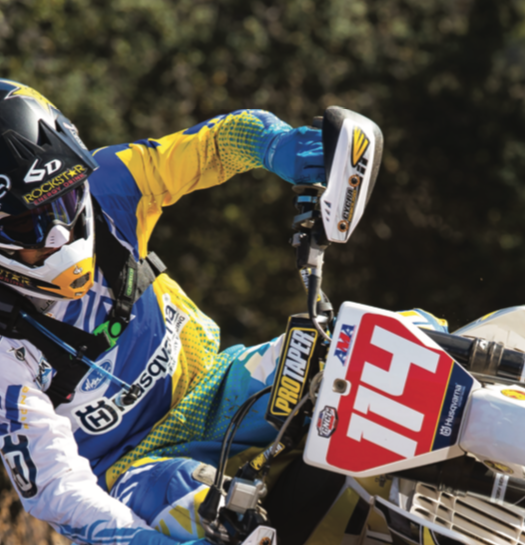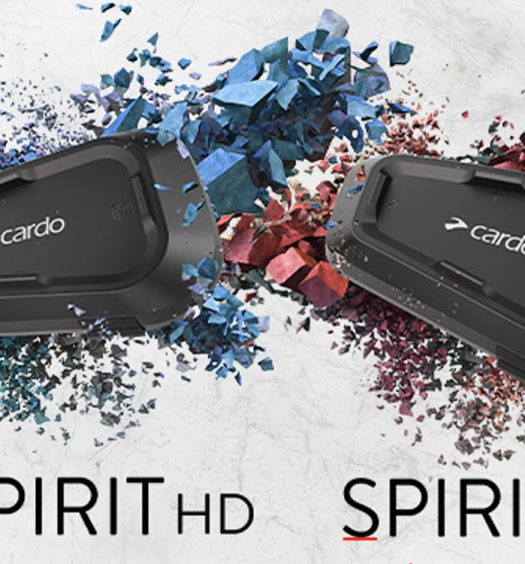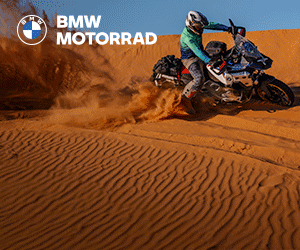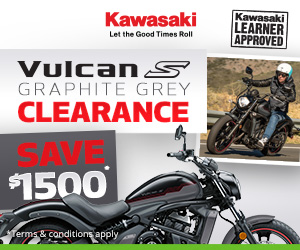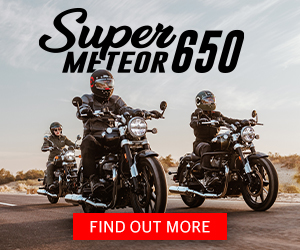Ever wondered what goes behind the scenes in the MotoGP and WorldSBK helmet World? Words: Jeff Ware, Taka & Kyoko Photography: Trevor Hedge
Arai have been at the forefront of motorsport for many decades and still use race experience to help develop their top of the line helmets. We luckily got the chance to visit the Arai Race Service workshop at the Phillip Island SBK round a few years back to see just what goes into keeping the top Arai riders protected and ready to race…
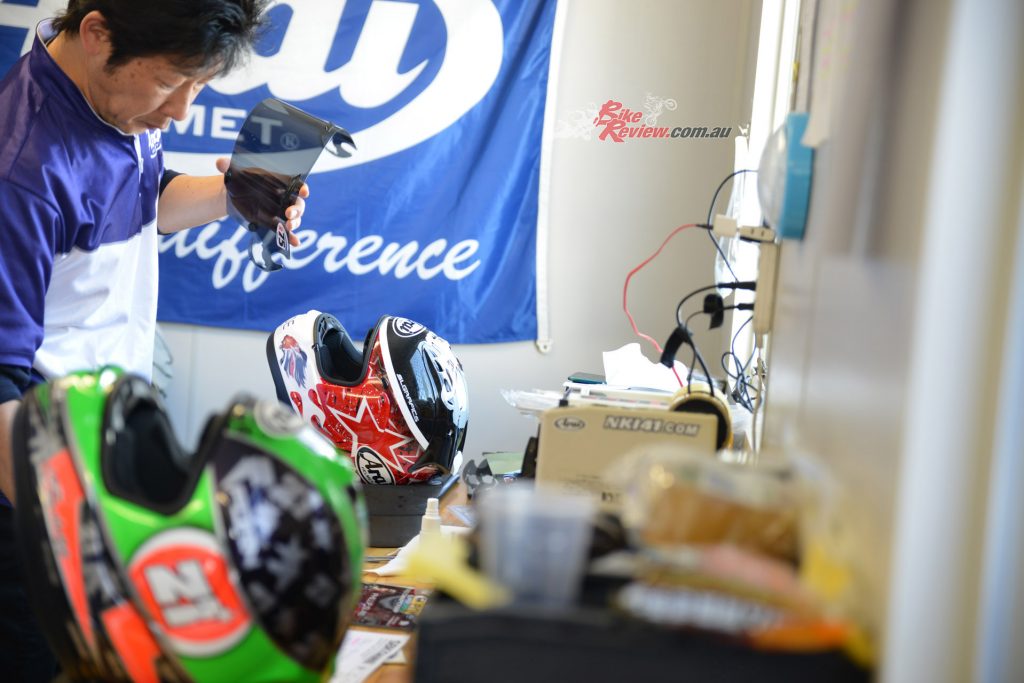
Arai’s Kenji Endoh travals to all WorldSBK and MotoGP rounds to service the helmets of Arai riders. Amazing stuff…
I first started wearing Arai helmets back in 1993 when my then boss, Len Willing, gave me an ex Roy Leslie custom painted Willing MC Arai. Prior to that I’d been wearing a plastic Bieffe lid – I was a young apprentice with no money, so that is all I could afford. Needless to say, the Arai impressed me and since that day over 21-years ago I’ve worn them for much of my riding career. In Japan, Moto Bum boss the late Ikezawa-San gave me an Arai to wear and here since 2001, when I became a full time bike journo, Cassons supplied me with new Arai helmets for press work and for racing. Over the years they have not only given me hundreds of thousands of comfortable miles on the street testing bikes for a living but also saved my head many times in racing crashes over the years. When your head is screwed together with titanium plates and glue, as mine is, you need extra special protection! In over 400-races in 20-years, I’ve never been knocked out in an Arai…
“Arai are very proud of the fact that they have had no knock-outs in racing that we know of in recent times,” says Marcus Holt of Cassons, the Arai Importer. “Arai have a longer history in racing than any other helmet brand and across many disciplines from bike racing to F1. We are also the only company that has a full time race service for our riders, in all International disciplines”.
Over the years attending WorldSBK and MotoGP rounds I’ve often seen the Arai Race Services centre and always wanted to have a look in there. Seeing the top riders pop in and out and seeing their Arai helmets lined up in there in racks is pretty exciting stuff to a race obsessed person like me!
A few years ago at WSBK I got really lucky. Marcus Holt invited me in to see the operation and to make things even better, my buddy Kyoko Nagata is mates with the boss Kenji Endoh, and she was keen to catch up with him. It was a great opportunity to see what happens behind the scenes – although a quick one as it was a busy day…
Walking into the small portable building, the first thing I see is Johnny Rea’s lid and Leon Haslam’s next to it. Wow. As a total race nerd and huge Arai fan, I’m stoked to be here… Marcus introduced me to Endoh-San, who is busily working away prepping helmets for the next session. Marcus helps out at the Australian rounds and is flat out too.
“After each session I generally go and get the helmets from the rider’s pit garages,” says Marcus, “I bring them back and we remove the visors and clean the entire helmet”.
“We only use fresh water with no additives at all,” adds Kenji. “Only a clean clothe and water. Many people use detergents but these can effect the helmet”.
The inside of the helmets are also only cleaned with water, with maybe new lining fitted if required.
This leads me to my next question. I’ve always thought that the top International riders had custom made helmets but I’m surprised to find out this is not the case.
“All of the helmets are off the shelf, Identical to what any rider can buy from Arai,” says Kenji, “No helmet shells are custom made and the lining is also tailored to fit the rider from our range of sizes, not custom made. Even F1 drivers wear the same product that anyone can buy”.
Marcus admits, “There are some riders who like a special fit but it’s only a matter of changing padding here and there. Arai helmets are made well enough for anyone, from a World Champion to the average rider on the street, everyone gets the same quality”.
Once the helmet is cleaned and freshened up, it may spend some time on the de-humidifier rack making sure it is dry and comfortable for the next session. Next, the new visor goes on with tear-offs fitted after the visor is on and the helmet is in the foam helmet holder or the spare ‘workshop’ helmet shell used for visor holding. Fitting the tear-offs is an art, as there needs to be perfect vision and the rider needs to be able to flick the tear-off off quickly without hindering progress or distracting him on the track. Most riders have the tab on the right hand side opposite the throttle hand, so they reach across and pull the tear off but some, like Johnny Rea, like to have the tab on the left hand side. Each tear-off is also taped on with a 25mm piece of clear tape that is dispensed by a special machine. Watching Marcus and Kenji fit tear-offs and visors is very cool. None of this fiddling and mucking around – these guys are pro’s and have done this thousands of times…
Any sponsor or rider logo sticker requirements are then taken care of before the entire helmet is given a wipe over and double-checked. I notice Endoh-San then carefully enters the service details into a log book he keeps on his bench, which logs every job done to every rider’s helmet. Interesting stuff.
Wet weather set-ups vary from rider to rider. While I am there I see a Johnny Rea helmet with full wet sealing – a foam bead hand cut and stuck around the perimeter of the visor area to stop all water entry. Interestingly, I’m told that most of the European riders run visors without ventilation, as that is what they are used to in the cold weather conditions of Europe. Whereas here we want as many air vents as possible!
Once a helmet is finished it is either delivered by hand to the garage or a team rep collects it. I was lucky enough to catch a few riders dropping in to collect their helmets in person and they all seemed very happy with the service, there were plenty of smiles in the Arai Service Workshop…
Endoh-San attends all WorlddSBK and MotoGP rounds throughout the year. A huge undertaking and he takes all the spare helmets for riders along with all other parts. According to Kenji, the average rider uses six Arai’s in a season, which is a lot less than I would have guessed.
One thing that really stood out to me was the difference of quality of custom graphics. Some helmets are stunning, Like Johnny Rea’s, but others were wrapped rather than painted and although they look good on TV, they look terrible in the flesh.
Overall it was a fun experience thanks to Marcus and Kyoko, particularly for this Arai fan!


